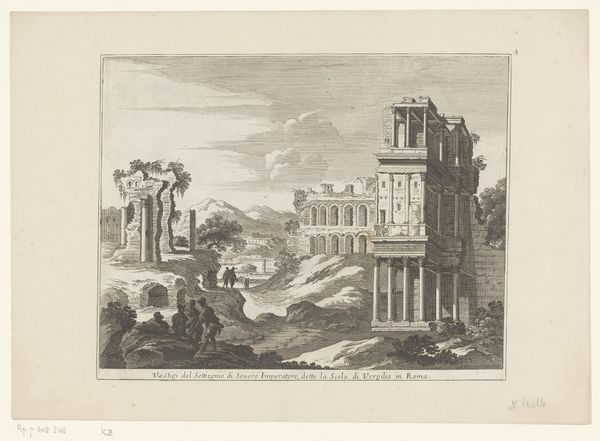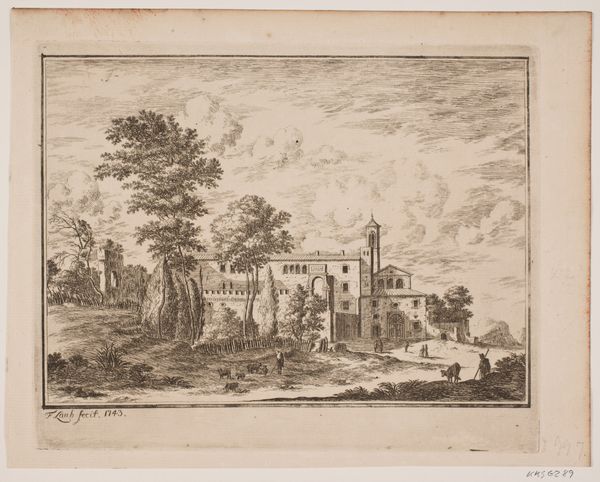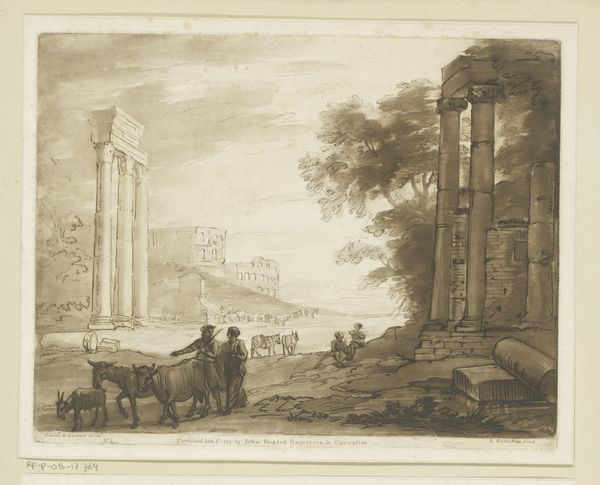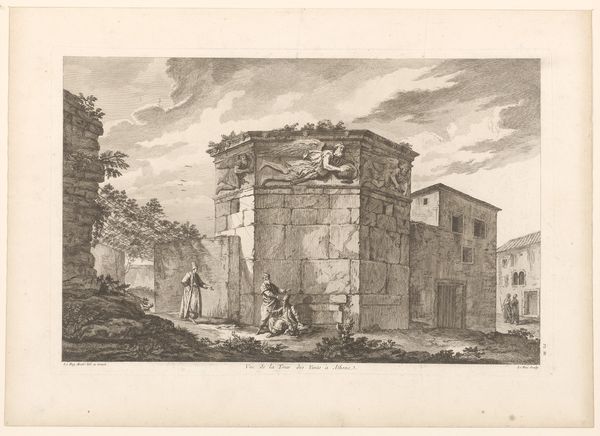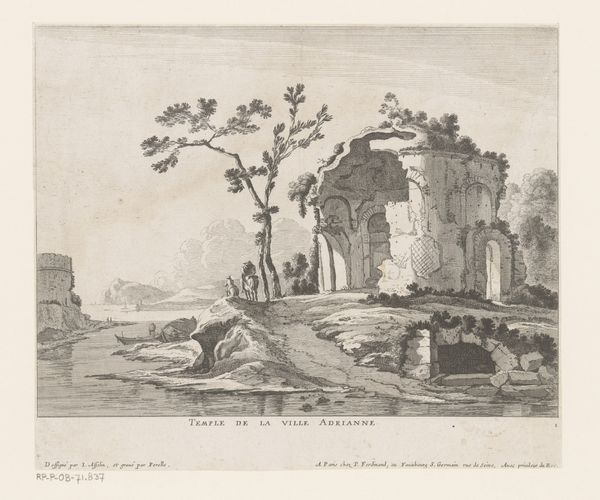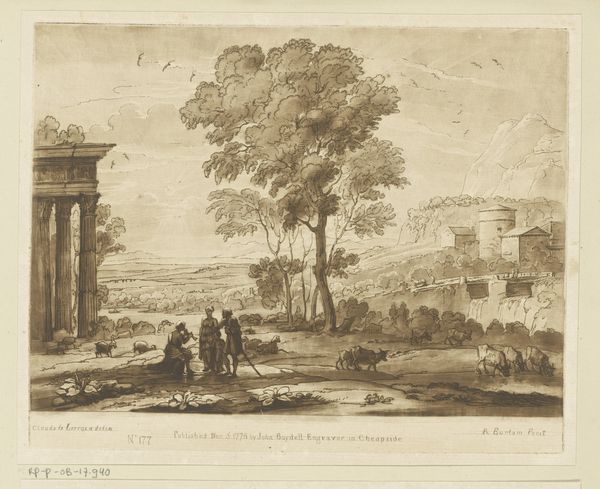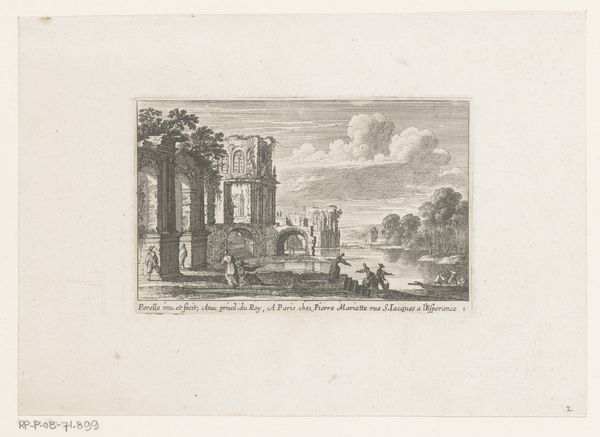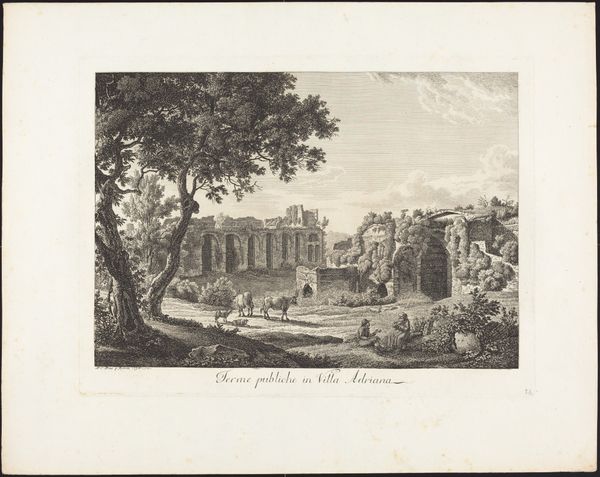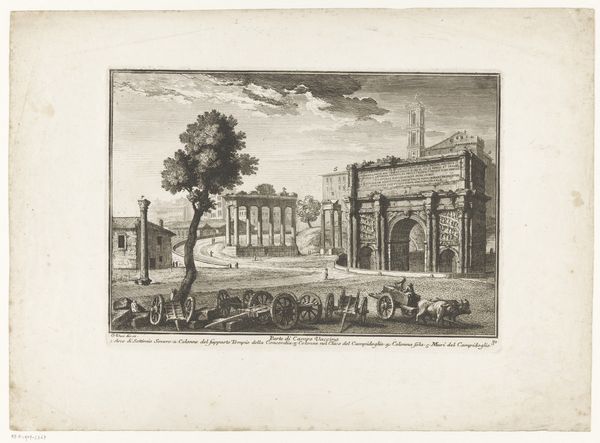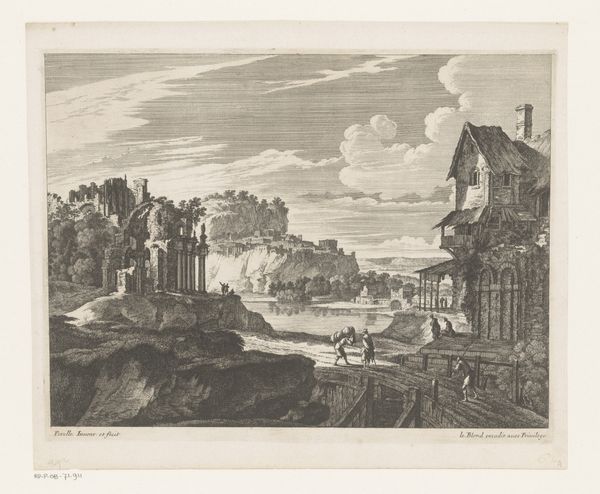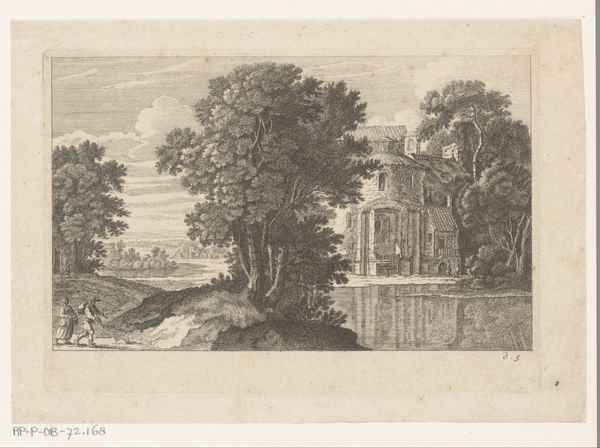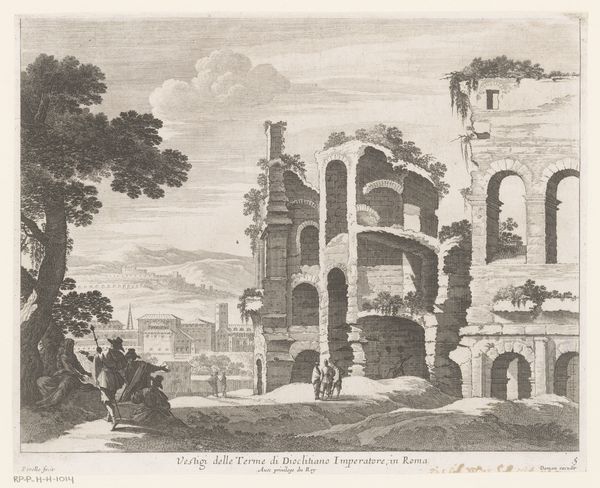
print, etching, paper, engraving, architecture
#
neoclacissism
# print
#
etching
#
greek-and-roman-art
#
old engraving style
#
landscape
#
paper
#
cityscape
#
engraving
#
architecture
Dimensions: height 308 mm, width 464 mm
Copyright: Rijks Museum: Open Domain
Editor: This is "View of the Erechtheion" by Jacques Philippe Le Bas, created in 1758. It’s an etching, an engraving, a print on paper. It's so detailed! I’m struck by the depiction of ruins… it seems to focus on decay and a kind of… past glory. What do you see in this piece? Curator: I see an explicit interest in production, labour and its means. Neoclassicism, the artistic movement prevalent during this time, romanticized Greek and Roman art and their motifs, often conveniently ignoring the materiality of the process of rediscovery itself. Look closely; consider how Le Bas crafted this print and how it challenges, or rather, ignores the boundaries between art and documentation. What was the actual lived experience of people in relation to those ruins? Editor: So, you're saying this image isn't just about the Erechtheion itself, but also about the way it's presented, the context surrounding its rediscovery and reproduction through printmaking? Curator: Precisely. This print participates in a system of artistic production and dissemination, almost mass-produced; not unique in nature as the object of Neoclassical worship in itself is proposed to be. How does labor intersect with our understanding and even our *consumption* of "high art"? Editor: I hadn't thought about the printmaking process itself being a commentary on the ruins… How this artwork circulated, how many hands contributed, and how far the images travel, is significant. I was focused on the aesthetics. Curator: Art is made. It is not extracted out of the air by genius artists. Who exactly had the means of commissioning or producing such artworks during this era? How does this reveal more about a society's understanding of art and even cultural consumption? Editor: Seeing it as a product of labor changes my perception entirely. Now it makes me want to question more who owned these prints, who benefitted from the distribution of the imagery. Curator: Exactly! Let us reflect and be reminded: Material realities of the labor and processes shaping our artistic vision cannot be unseen once acknowledged.
Comments
No comments
Be the first to comment and join the conversation on the ultimate creative platform.
